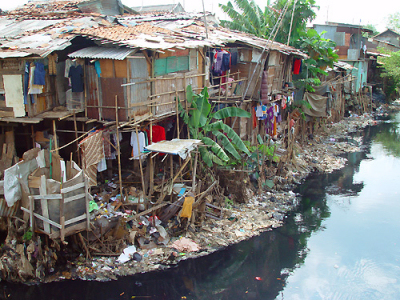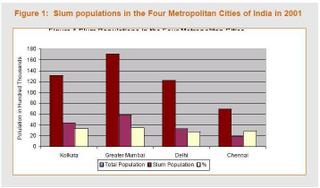This is the third and final post oh Ravi Kucchimanchi’s conversations with us. The first two can be found
here and
here.
***********
This was a widely free flowing discussion, where a situation was presented and we were asked for possible solutions or ways to tackle the problem. Though it was based on snippets from real life incidents, we'll assume that this is hypothetical. A simple situation of corruption being the primary obstacle to basic progress.
Now, let’s take the example of a village with around 200 houses. 150 of them don't have electricity, though the village is officially "electrified". You investigate, and find out from the villagers that the only way to obtain an electricity connection would be to pay a fairly large bribe, say some 1500 rupees. This may not seem too exorbitant, but we're talking about very poor villagers, who spend about 40 rupees per month on kerosene for their lanterns. Many of them want electricity so that they can have a couple of light bulbs at home, their kids can stay back and study in the evenings, and perhaps they can afford a fan to use in the summer months. Seems very basic, but this small change means a lot to them. And they cannot afford to pay the bribe, and remain powerless (pardon the pun). The situation was thrown open to us, and we were asked for possible solutions. Here are some that were voiced.
1) Try to unite the poor villagers, and force the local authorities to provide the villagers these basic services by taking legal action against them.
problems with this scenario: This would certainly be a long and difficult struggle. If you as an outsider were doing this, you will have to remain in this village for a long time (probably years) to see this fight through. That would be difficult for you. Secondly, the villagers might have to undergo a lot of other hardships (repercussions) if they start these demands. Thirdly, it is difficult to keep a group already with difficulties to stay united. Legal disputes and cases take a long time for resolution in court (years sometimes), and can be very expensive. Who will bear the expense for that many years? Who will ensure the implementation of the court verdict, even if it is in their favor? Much easier said than done.2) We know that such corruption exists. But there is some validity of strength in numbers. So, couldn't the villagers unite, and then say that though they can't pay the huge bribe, they will together pool a smaller (but still large, because of scale up) amount each, and give this in bulk. Sort of like a Costco or Sam's club bulk rate pricing, a discounted rate of corruption (yes, a couple of us came up with this idea!)
Problem with this scenario: Come on, if an ethical battle is being fought, you have to take a correct stand. This would absolutely condone corruption. Additionally, it may or may not work, but will make any future in the progress next to impossible.3) As an NGO, promote alternate energy sources, such as solar or biogas, which can be used in place of electricity.
Problems with this scenario: This one can be viable, but only in certain cases. The costs of solar lightning etc are (still) much higher than conventional electricity sources, and require a lot of funding. It is cheaper for say, solar cookers, but solar lighting is another proposition all together. With biogas etc, it's not enough to have cattle, but there should be a certain number of cattle, as well as sufficient quantities of water to spare. Again, cost factors are fairly high (to build a distribution system etc). However, some groups, like the Barefoot college have managed to solve some problems with this approach. Still, it is difficult for small groups to do this in a large number of villages. Implementation requires a huge grassroots base, which most groups don’t have.4) Look for sincere officials to help combat this problems. After all, all government officials can't be bad.
Problems with this scenario: It is absolutely true that there are good government and administrative officials, who are not corrupt and work sincerely. However, they are not the rule, and a large section of the officials are not in this category. Often, the good ones are themselves powerless given their surroundings (if say there is a good middle level official, but the immediate superior is corrupt, the good official is unable to act. Sometimes, a junior official who is corrupt might be politically or locally very powerful, and the senior official can't go against him/her). But it certainly is a good idea to find these officials, and take their help whenever possible. However, in say the situation above, this alone will not provide a solution.5) Gather some villagers, surround (in this case) the linesman and ask him why he accepts bribes (say at a panchayat meeting). Try to publicly question him, and hope that yields results.
Problems with this scenario: Usually, the lowest official will claim that he's being paid too little. Then the villagers will clamor that this is not true, and reveal his (usually rather adequate) salary. He'll backtrack, and then say that his share of the bribe in only 50 rupees, the rest go to superiors. So he might magnanimously forfeit his share. But this gets more and more difficult as you go up the ladder (to say a senior engineer, who's cut is actually heftier). Still, there are merits in this suggestion as well.6) How about negotiating a settlement with the officials, with a request that they at least consider requests from the poorest applicants without demanding bribes. The list would be provided to the officials by an impartial external group (say the NGO), with the guarantee that each person in the list is too poor to possibly pay the bribe. This person could the be awarded a connection. The carrot to the government officials in this case would be a guarantee not to go to the press, or press charges.
Problems with this scenario: Even if the officials agree to this (due to your constant pressure), they might take a very long time to execute this/clear the files. Additionally, would it not be unfair to the others, who, though they can possibly afford the bribe, should by right not have to pay it. Where do you draw the line? Here you are not really condoning corruption, but you are drawing some line to start your fight. However, it is a possibly viable stance.These were just some of the ideas we discussed, and include real life situations. But do you have more ideas? Would you choose to do any of these, or come up with something different? I don't think there are any right or wrong answers, just choices. Go on, what would you do?



